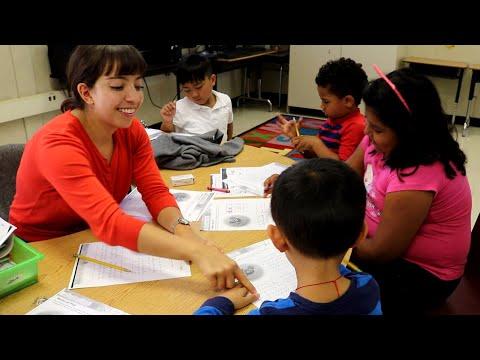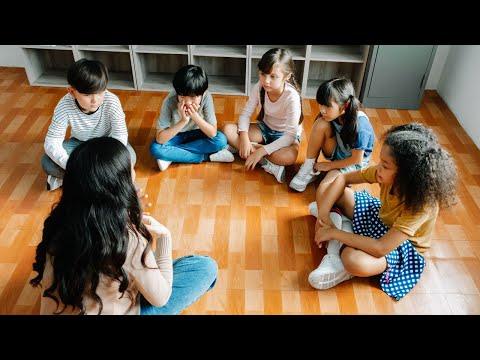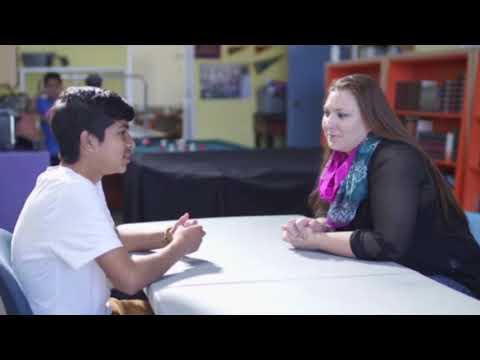How OST Educators can Support Multilingual Learners During the Pandemic
CalSAC's Multilingual Learner (ML) Training Series
 A third of students in California’s
out-of-school time (OST) programs are multilingual learners,
each bringing unique gifts and perspectives to their school
communities. CalSAC has updated its
highly-rated Multilingual Learner (ML)
Training Series to strengthen the
OST workforce’s capacity to deliver high-quality,
intentional, and inclusive programming that meets the needs of
young people who are developing their language skills and
learning English. CalSAC is committed to investing in
Newcomers and multilingual youth, especially during the COVID-19
pandemic, because they are particularly vulnerable to learning
loss and other educational disparities.
A third of students in California’s
out-of-school time (OST) programs are multilingual learners,
each bringing unique gifts and perspectives to their school
communities. CalSAC has updated its
highly-rated Multilingual Learner (ML)
Training Series to strengthen the
OST workforce’s capacity to deliver high-quality,
intentional, and inclusive programming that meets the needs of
young people who are developing their language skills and
learning English. CalSAC is committed to investing in
Newcomers and multilingual youth, especially during the COVID-19
pandemic, because they are particularly vulnerable to learning
loss and other educational disparities.
Training Opportunities & Costs
By design, high-quality OST programs provide enrichment and encouragement that helps all young people learn and grow. Yet, there is even more that we can do to intentionally reach and support multilingual learners so that they thrive – today and throughout their lifetimes. Luckily, good practices to support MLs are good practices for all young people, making these ML training opportunities an essential resource for all staff!
Funding for professional development, while incredibly important, is also difficult to prioritize during this time, because of the many other needs and requirements of OST programs and school districts. CalSAC has designed their ML professional development with these challenges in mind: thanks to the generous funding of the Emerging Bilingual Collaborative, all ML training will be offered free of charge through June 30, 2022, a value of $350 per training.
Training Content
- Though the ML modules were designed as a series, they have also been updated to make them effective, so that programs who can only schedule one training at a time aren’t excluded from the opportunity to gain these essential skills.
- “Bite-sized” Training Videos: 8 short, 5-minute video segments addressing different strategies and supports for MLs – accessible at any time on CalSAC’s website so that OST practitioners have the flexibility to learn at their own pace and in their own time.
- Coaching and Action Planning Toolkit: Participants will also receive a Coaching and Action-Planning Toolkit after each module to deepen their knowledge, access additional resources, promote staff reflection, and create action plans to integrate learning into their programs.
Access the “Bite-sized” Training Videos below!
Training Modules
Knowing Multilingual Learners
Gain a deeper understanding of the diversity and specific needs
of the multilingual learner (ML) population.
Social-Emotional Factors of Multilingual
Learners
Strengthen your understanding and practice identifying the most
common social-emotional factors that affect Multilingual Learner
students and their achievement.
Strategies for Language Development
Review general, research-based strategies to support Multilingual
Learners with language development and practice modifying
activities to support academics and language development.
Coming Soon to the ML Series!
Three new modules covering topics such as healthy cultural
identities, family engagement, and supporting MLs with different
language levels.
Related Content
Committed to supporting Multilingual Learners, but short on time?
CalSAC has you covered! Try their “bite-sized” mini-courses – all 5 minutes or less, filled with easy strategies that you can try tomorrow, and readily accessible on your phone, tablet, or computer. New courses will be released every 2 weeks, now through July.
Bite-Size Video #8: Using Homework Help to Support Language Development
CalSAC's Multilingual Learners Training Project
In the final video of CalSAC’s Multilingual Learner (ML) Bite-Sized Video Series, Dianna reviews how to utilize homework help time in a program to support the ongoing language development of all students—particularly multilingual learners. Learn how to intentionally use visuals and vocabulary lists to support multilingual learner students with developing their abilities in more than one language.
Bite-Size Video #7: Ensuring Student Comprehension
CalSAC's Multilingual Learners Training Project
In the seventh installment of the Multilingual Learner (ML) Bite-Sized Video Series, Beverly shares two research-backed strategies to ensure comprehension as all students—including multilingual learners— continue to develop their vocabulary and speaking skills in one or more languages. Learn how to intentionally incorporate methods to ensure student comprehension in activities in your program!
Bite-Size Video #6: Supporting Academic Language Development in OST Programs
CalSAC's Multilingual Learners Training Project
Language development is an ongoing process that happens all the time, not just in designated “language learning” time. The flexibility of programming in out-of-school time (OST) programs equips youth practitioners to support the ongoing language development of all students, especially multilingual learners.
In this video, watch as Delaney discusses ways to intentionally teach English and academic vocabulary throughout activities implemented in OST programs.
Bite-Size Video #5: Supporting Language Development through Speaking Practice
CalSAC's Multilingual Learners Training Project
This video focuses on learning how to intentionally create space for multilingual learners to practice speaking English and their home language in out-of-school time (OST) programs, and how it supports their ongoing language development. Explore different ways to create space for speaking practice as Dianna shares two research-based strategies to apply in your program this summer.










